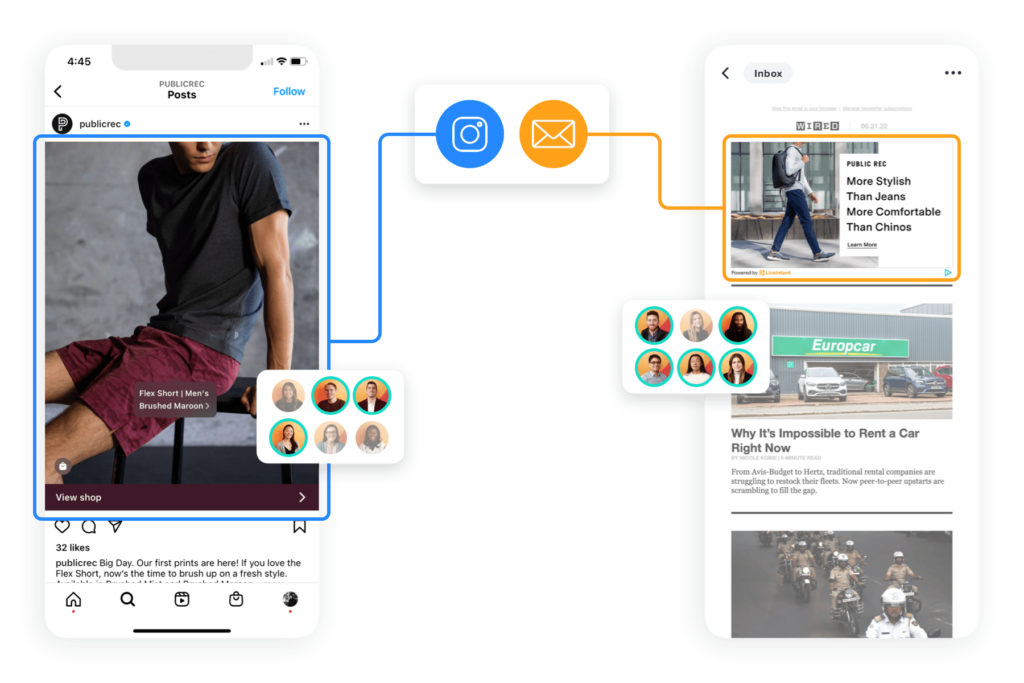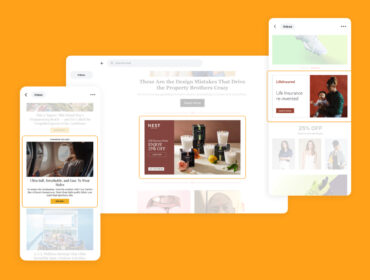Why marketing channel diversification is critical to D2C success
If you’re a D2C marketer you probably have two things on your mind: increasing awareness of your brand and driving business growth. The marketing channel or channels that help you achieve these objectives quickly and easily are likely to become your favorites, possibly leading you to focus the majority (if not all) of your marketing efforts on them. While you may see impressive results at first, overtime this approach may actually hinder your campaign performance and cost you money. Instead of putting all your eggs in one basket, consider marketing channel diversification.

In this blog post you’ll get answers to common questions, like:
- What is marketing channel diversification?
- How can it help me drive growth?
- What are the benefits and best practices?
What is marketing channel diversification?
Marketing channel diversification is the practice of leveraging a variety of channels to market and promote your brand, products, or services to maximize reach and awareness.
Why is marketing channel diversification important?
Like any solid investment strategy, portfolio diversification is critical to mitigating risk and increasing earnings. The same concept applies to your marketing investments. When you use various marketing channels you spread your marketing risk out making your business less susceptible to volatility.
What are the benefits to diversifying my marketing channels?
As we mentioned, marketing channel diversification helps mitigate risk, but that’s not all it does. By diversifying your marketing mix you can:
Gather more data.
When you use various channels in your marketing you can gather more data to inform your marketing strategies. For instance, data from a diverse marketing mix can help you understand which channels perform better, what creative formats perform best (and on which channels), and which channels are preferred by different audiences. An older generation may engage more via Facebook advertising whereas younger generations may prefer Instagram and email, for example. Those are helpful insights you can use in future marketing strategies.
Avoid channel saturation and a high CPA.
When you focus too heavily on one or two channels, you run the risk of achieving channel saturation. In other words, there are only so many people you can reach and convert in a channel before you can’t. Eventually, you’ll see campaign performance plateau which will drive up your CAC or CPA. By diversifying your marketing channels, you avoid the risk of over saturating your channels and driving up your CAC costs.
Stand apart from the competition.
By reaching audiences across several channels, you have a better chance of capturing consumer attention and growing awareness. Furthermore, different channels may be more effective at different stages of the customer journey. With a diverse marketing mix, you can reach your customers where they are in their customer journey.

Best practices for diversifying your marketing channels
Of course, diversifying your marketing channels can be intimidating. You might not know where or how to get started. Check out some advice from some of the fastest-growing D2C brands on how they approach marketing channel diversification.
Diversify a little at a time.
eBags has been around for more than two decades. So, it’s seen a lot of change in the way customers find the site. Part of why eBags continues to thrive among increased competition is because its leaders are open to trying acquisition methods. So if you’re an established B2C brand, challenge yourself to diversify your marketing by adding one new channel to your mix this quarter.
Test channels with the 80/20 rule.
“Facebook has been a huge channel for us, but we like to operate as if it’s going to disappear tomorrow,” says vuori Customer Acquisition Manager, Bret Fredrickson. “That means taking advantage of it while it’s here, but also looking at new channels and investing where we think attention will go to.”

Fredrickson’s team employs a split that could benefit many companies. “We fall back to the 80/20 Rule,” he says, allocating 80 percent of marketing acquisition spend to the best channels, and 20 percent to the test channels. This helps ensure that, even if one of the best channels disappears with little notice, you’ve got some tested back-up plans to help fill the gap.
Don’t move on too quickly.
As we’ve established, diversification is critically important. But Public Rec founder and CEO, Zach Goldstein, warns that brands – especially young brands – shouldn’t diversify simply for diversification’s sake.
Like any experiment, establishing a significant baseline of data is critical to testing and can only be done overtime. “Dial in a channel and make sure you’re comfortable with it and get it firing before moving onto the next one,” he says. If you’re confident a small number of channels are going to provide the majority of your leads and conversions, Goldstein says you shouldn’t be afraid to double down. He advises newer companies and D2C brands to “optimize those first” before worrying too much about growing into and testing new marketing channel partnerships.
Conclusion
Now that you know why marketing channel diversification is important to your business, it’s time to start considering other channels. Check out email newsletters and what they can do for you. With more than 4.2 billion people using email worldwide, you’ll be hard pressed to find a channel with as much reach.


